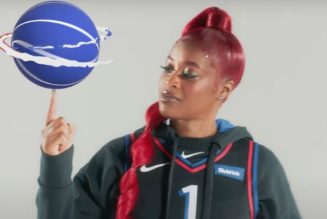Pickups are fun and relatively cheap entries into the world of rear-wheel drive performance. Older trucks especially are simple to work on, offer sensational parts availability from both catalogs and scrap yards (where millions of their brethren sit waiting to be picked apart), and can be made to accept a wide variety of drivetrains and suspension setups with relative ease.
Factory performance trucks are a relatively new concept, however. Although outliers like the Lil Red Express were around in the ’70s, it wasn’t until the early 90s that Detroit began to embrace the idea of building its own hot rods and testing the waters with its loyal pickups buyers. With flashy rides like the turbocharged GMC Syclone and, later, the supercharged Ford F-150 Lightning grabbing most of the muscle truck glory, one of the pioneers of the segment has been largely forgotten: the Chevrolet 454 SS.
Big Block, Big Truck
From a design perspective there wasn’t really anything groundbreaking about the 1990 Chevrolet 454 SS, which followed the time-honored tenet of putting a huge engine in a (relatively) small platform. Ok, so the 454 SS was still a full-size truck, but it was the lightest iteration of that model, a two-wheel drive, short-box, single-cab C1500 upgraded with a beefier front sway bar, Bilstein shocks, quicker steering, and 275/65 R15 tires (which were hefty for the pre-20-inch era).
Under the hood Chevrolet simply diverted a drivetrain from its heavy-duty pickup assembly line, a 454 cubic inch V-8 rated at 230 horsepower and a whopping 385 lb-ft of torque. That latter figure was serious stuff for the day: the small-block in the ’90 Camaro IROC-Z was good for 245 horses but only 345 lb-ft of twist. A three-speed automatic transmission handled the shifting duties for the first year of production, with the SS capable of reaching 60-mph in less than eight seconds.
Of course, to make that straight-line run, you’d have to be fairly judicious with the throttle, as big-block pickups are notorious for lighting up the rear tires due to the lack of any real weight over the back axle. That tendency only increased in ’91, when a new four-speed autobox brought with it a 4.10 gear to replace the previous 3.73, along with a bump to 255 horses and 405 lb-ft of torque.
Easy To Spot, Cheap As Dirt
Chevrolet certainly wasn’t shy about advertising the existence 454 SS, which bore huge stickers on either side of the box, a red bowtie badge up front, and on some models an equally large sticker on the bed. 1990 models were all black with a blacked-out grille, fog lights in the air dam, and chrome rims, with additional colors (Summit White and Victory Red) appearing in 1992 and 1993, which was the final year of production. Dual exhaust on the ’91-’93 models is also a give-away. On the inside, unique bucket seats wrapped in red upholstery and a center console help identify the pickups as something special.
Still despite being built in limited numbers—roughly 17,000 total, with 75 percent of that figure leaving the factory as 1990 models—the 454 SS never really caught on with collectors or customizers. Sure, you can spend $30k on a sub-1000 mile time capsule if you want to, but most of these trucks trade well under $10,000 for a nice driver, and half that for a project. Compare that to Syclone prices (more rare, and much quicker), and it’s obvious where buyers have been focusing their attention over the years.
Better yet, it’s incredibly easy to clone one of these hot pickups for very little money. Start out with a shortbox C1500, drop in a warmed-over 5.7-liter small-block, and you can duplicate the performance without spending all that much cash. Paint everything black and add some stickers, and you’ve got a ready-to-go SS tribute on your hands.
Legacy
The Chevrolet 454 SS caused a ripple effect in the truck market that would spawn some of its most memorable performance models. We already mentioned the supercharged Lightning (which was preceded by the 351-powered Lightning in the early 90s, a more direct competitor to the SS), but even within General Motors it’s easy to see how the 454 led to vehicles like the SSR faux-rod and, later, the Silverado SS. Over at Dodge, without the Lightning, we’re unlikely to have seen the Ram SRT-10, which again links back to the 454 SS.








